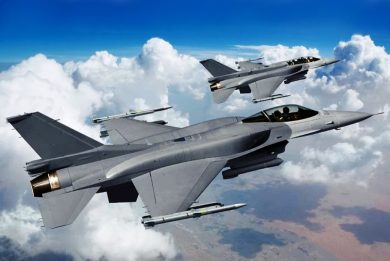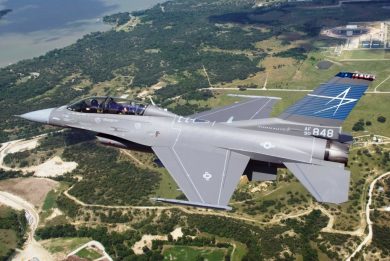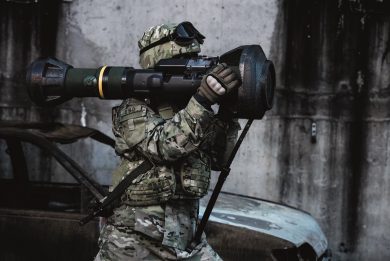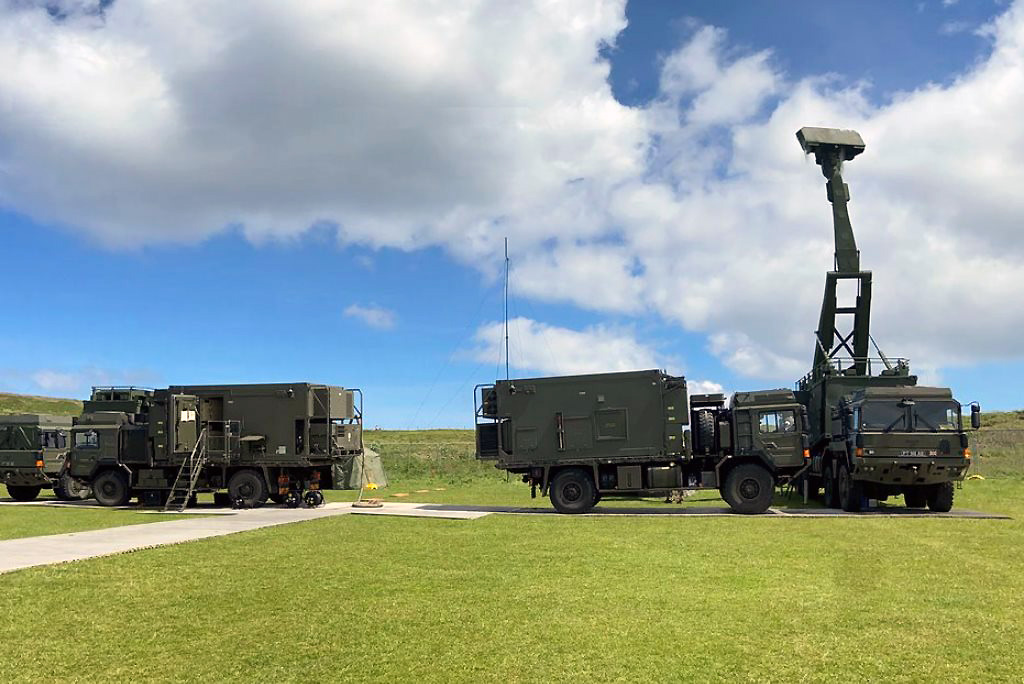
SkyKeeper, a LEAPP ahead for UK Ground Based Air Defence
With Project Convergence 24 already underway in the US, British Army elements have already been deployed over the pond to start experimenting in that new environment. Among them a detachment of the 7th Air Defence Group (7 ADG), the British Army formation part of 3rd (UK) Division, responsible for all Army Ground Based Air Defence (GBAD) assets. It deploys, for experimental purposes, a new experimentation version of its Land Environment Air Picture Provision (LEAPP) capability, known as LEAPP-in-a-box or SkyKeeper Flex, following successful completion of a C2 upgrade programme to the original LEAPP
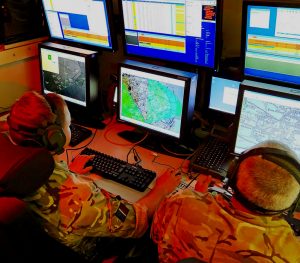
Conceived in the early 2000, Lockheed Martin’s LEAPP and Automated Sense and Warn (AS&W), have both since deployed operationally, the latter having served effectively in Afghanistan as a C-RAM (Counter-Artillery, Rocket, Mortar) asset. LEAPP entered service in 2014, but by the end of the 2010s required a mid-life update (MLU) programme. “The design philosophy of the time, used when developing the original LEAPP, was aimed much more at answering the requirements, growth potential being a secondary issue. The system was based on a now obsolete operating system which was struggling to maintain security accreditation with the Armed Forces,” Richard Turner, Business Development Manager for SkyKeeper at Lockheed Martin UK Ampthill tells EDR On-Line. LEAPP was capable of linking lower tier sensors, providing a recognised air picture (RAP) to the Land Component Commander, as well as to other players on the battlefield, but was limited in flexibility, being designed more as a closed system rather than one with an open architecture.
In parallel with the employment of the LEAPP, in the early 2010 Lockheed Martin UK started working on SkyKeeper; leveraging the lessons learned that came from British Army operational deployments, SkyKeeper was created exploiting the advantages of Data Distribution Service (DDS) technology that allows an easy integration of subsystems. The core of SkyKeeper remains therefore untouched while adding new sensors and effectors, an intermediate layer of interfaces connecting those elements to the core, the system allowing full data-sharing which in turn permits to provide the various echelons with the needed RAP and information. In terms of communications the SkyKeeper system represents a quantum leap compared to the previous system used by British Forces. “The latter was limited in terms of links, while the new system adopted by the British Army is capable to support the Link 16 MIDS/JTRS with the potential for JREAP-C, to connect with upper echelons and assets, while towards lower echelons it can interface with Combat Net Radio as well as with Wide Area Networks. The new system is more user-friendly, the Human Machine Interface having been completely revised, making it easier to exploit information and streamlining decision-making,” Richard Turner explains. It was therefore decided to replace LEAPP’s operating system with SkyKeeper software.
The system delivered to the 7 ADG in Q4 2023 is in fact a new system rather than an updated one, and allows the unit to move towards new capabilities, one of these being the capacity to handle Counter-Unmanned Air Systems (C-UAS) both in terms of sensors and effectors. While radiofrequency jammers and directed energy weapons integration is already completed, the same applying to electro-optic and radar sensors, other assets such as acoustic sensors and electronic warfare systems are still in the de-risking phase but should become available in the short term. This is true also for a number of GBAD systems and sensors, for which interfaces are being created that will further expand the SkyKeeper flexibility.
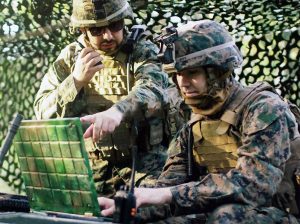
“The British MLU did not considered a change in the system form factor. However, Lockheed Martin UK identified the need for developing a family of systems with same capabilities but with different form factors, to adapt them to the various forces echelons,” Mr. Turner adds. The higher one is known as SkyKeeper Command, providing full command and control capabilities, this system being hosted either in an infrastructure or in ISO 20 shelters at high echelon command posts.
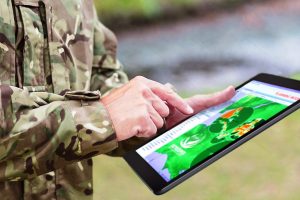
The SkyKeeper Flex, dubbed “SkyKeeper in a box”, is a fully militarised version that can be transported in a box, hence the nickname. This version is not fully adopted by the British Army; however, it is the version the 7 ADG deployed on Project Convergence 24 at experimental level. Here the system will be linked to sensors via high-capacity line-of-sight radios, rather than using fibre optic cables. In six weeks from the Army request Lockheed Martin UK delivered two systems that were embarked for the United States where for the first time Allied nations will take part in the main US experimental manoeuvre. “The system can be easily fitted in the boot of a standard vehicle, the US experiment allowing to demonstrate the capability of that small form factor system. In perspective such version might be a good solution for highly mobile forces such as the British Army 16 Air Assault Brigade Combat Team, 1st Intelligence, Surveillance and Reconnaissance Brigade, and for the Royal Navy 3 Commando Brigade,” Richard Turner underlines.
SkyKeeper Edge is a solution aimed at inserting in the SkyKeeper network into non-digital SHORAD and VSHORAD assets utilising tablets. It provides a RAP with limited range while eventually giving warnings of incoming threats while they are still at further distance. The system allows the provision of digital source information to non-digital assets, allowing a quicker response.
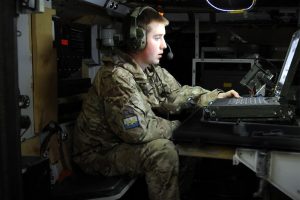
Finally comes the SkyKeeper Manoeuvre, a system to be installed in the back of armoured vehicles such as the Boxer or the Foxhound with a dedicated C2 suite. The SkyKeeper is compatible with the NATO Generic Vehicle Architecture and can therefore be easily integrated, not only in a command post vehicle, but also in those vehicles that can be used as mobile sensors and effectors to be added to those already part of the SkyKeeper network.
Lockheed Martin UK is highlighting those features to the British Army and the UK MoD, aiming at being proactive in experimenting such solutions following the path of the increasing Defence-Industry cooperation and aiming at exploiting existing systems, such as the upgraded LEAPP and existing Ajax, to improve the Army capabilities by integrating those assets, in a bottom-up process. The company is proposing its system also for the Future UK Land GBAD as a layered and integrated C2 system across all combat management systems, linking SHORAD and VSHORAD assets including Sky Sabre and LMM/HVM, and potentially MRAD, if and when the Army will select such an effector, for example one based on the CAMM-ER. Lockheed Martin UK is also confident that its system might be integrated in the SERPENS project, which aims at introducing a new battlefield weapon-locating capability.
“Looking at export, the SkyKeeper has been selected by Lockheed Martin Missiles and Fire Control as the BMC4I that is proposed to potential customers as part of the company GBAD solutions, a first contract is currently being worked,” Richard Turner announces. Another one is in the pipeline, with a third party requiring the SkyKeeper to integrate it into its solution to be provided to a Middle East country. One of the selling points of the system is that when low latency is not required, the data needs limited bandwidth to allow information to be exchanged, allowing users to exploit their existing networks.
The system is far from having reached the end of its development, as this is following a spiral approach, along an iterative process between new requirements and further upgrades.
Photos courtesy Lockheed Martin

